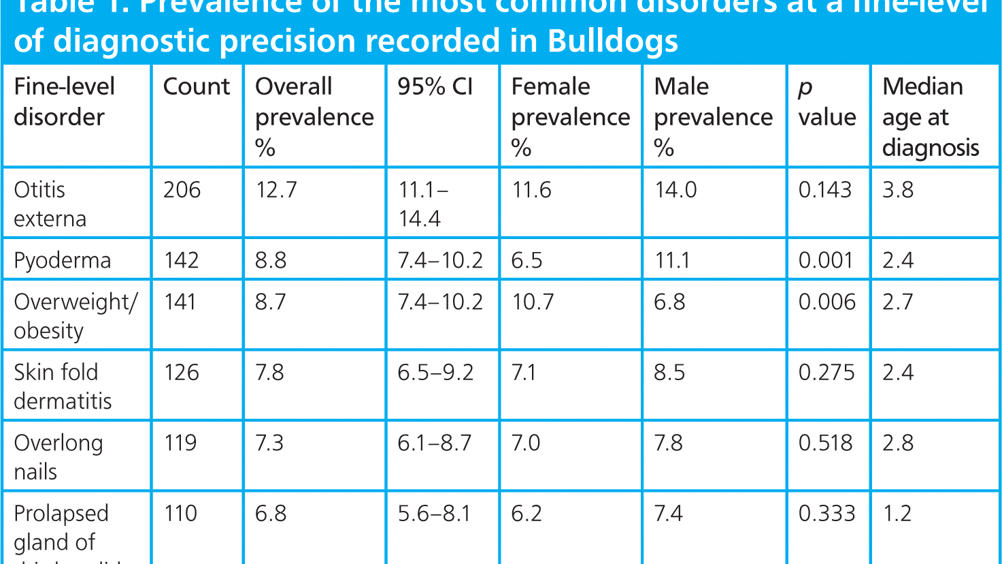References
What's new for veterinary nurses to know about British Bulldogs?

Abstract
British Bulldog ownership has doubled but the breed faces high risk of skin disease and obesity, a new study has found. Dan O'Neill explains.
A recent study led by the Royal Veterinary College's (RVC) VetCompass™ programme, has revealed that British Bulldog ownership has almost doubled from comprising 0.35% of all puppies born in the UK in 2009 to 0.60% in 2013. The reasons behind such an increase in ownership are complex, but could in part be down to public perceptions of the breed, their popularity with celebrities, and media portrayal.
Sadly, however, the research has shown that 12.7% of British Bulldogs suffer from ear infections, 8.8% from skin infections and 8.7% from obesity. It has also become apparent that there are a number of conditions that are more prevalent in British Bulldogs than in other dog breeds (see Table 1). Many of these issues are linked with certain desired aesthetics encouraged when breeding British Bulldogs, such as their characteristic shortened face and folded skin.
Disturbingly, only 3.5% of the 1621 British Bulldogs analysed in the study were formally diagnosed with brachycephalic obstructive airway syndrome (BOAS). This suggests that owners and veterinary professionals accept breathing problems, such as snoring, as normal for this short-muzzled breed and are therefore not focusing on these issues during clinical examinations.
Register now to continue reading
Thank you for visiting The Veterinary Nurse and reading some of our peer-reviewed content for veterinary professionals. To continue reading this article, please register today.

